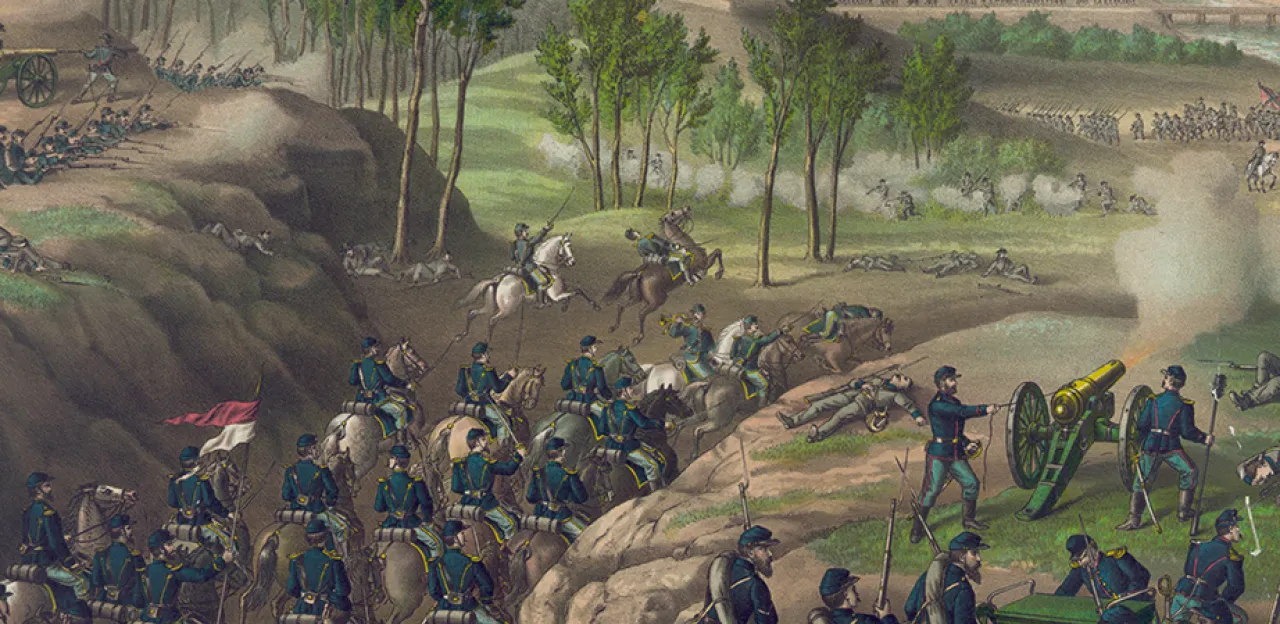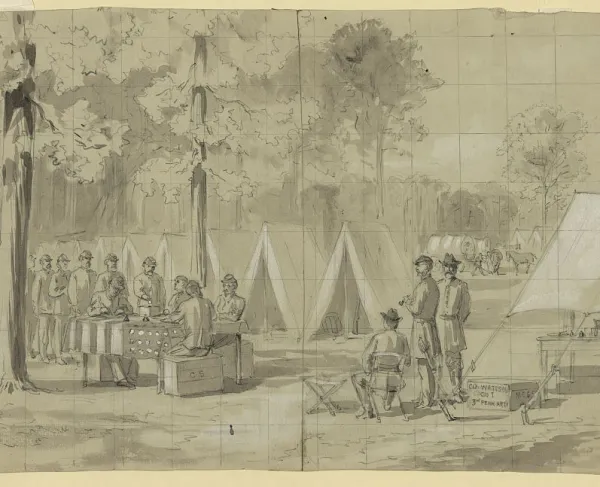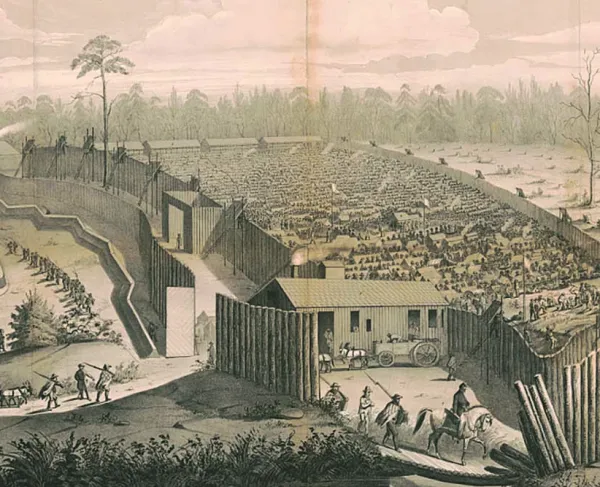Resaca

The Battle of Resaca
On May 5, Confederate Gen. Joseph E. Johnston ordered Brig. Gen. James Cantey’s infantry brigade to Resaca, a small town along the Western & Atlantic Railroad on the north bank of the Oostanaula River, five and a half miles east of Snake Creek Gap. After digging earthworks to protect the railroad and wagon bridges, Cantey placed the 37th Mississippi atop a treeless ridge known as the "Bald Hill." Johnston ordered a brigade of cavalry, Col. J. Warren Grigsby’s, to ride for Resaca on May 8 to reinforce Cantey. That day, Sherman had attacked Johnston on Rocky Face Ridge 17 miles to the north, and Johnston needed the Resaca bridges to supply his army, or to provide a safe route of retreat toward Atlanta.
Maj. Gen. James B. McPherson had his troops marching on May 9 with orders to strike the railroad at Resaca to cut off Johnston. When Grigsby’s troopers approached, the Federals drove them back to the ridgeline where the 37th Mississippi waited. A division of Federal infantry under Brig. Gen. Thomas Sweeny drove the Confederates across Camp Creek and back to Cantey’s mainline. Sweeny’s troops occupied Bald Hill, and from there could see Resaca and the railroad bridge over the Oostanaula.
McPherson arrived, and instructed Sweeny to hold Bald Hill while he sent other infantry to the north looking for an approach to the railroad. But McPherson lost his nerve; worried that Johnston would send troops to drive him back, he ordered Sweeny back to Snake Creek Gap. The Union infantry withdrew, abandoning Bald Hill. When Sherman learned this, he was disappointed “beyond measure,” as he wrote to McPherson, telling him to dig in while he brought the rest of the army through Snake Creek Gap.
By May 14, Johnston’s Confederate army was positioned north and west of Resaca, stretching four miles, with its left on the Oostanaula and the right extending to the Conasauga River. Camp Creek cut across most of Johnston’s front, creating an obstacle for the Federals. As Sherman’s forces marching from Snake Creek Gap paralleled the Rebel lines, Sherman ordered attacks to keep the Rebels occupied while Sweeny’s division of the XVI Corps crossed the Oostanaula four miles downstream from Resaca at Lay’s Ferry, beyond the Confederates’ left, to threaten the railroad.
Late on the morning of May 14, Yankees from Maj. Gen John Schofield’s XXIII and Maj. Gen. Oliver O. Howard’s IV Corps attacked across Camp Creek, “with quicksand in places, and steep muddy banks.” Schofield’s two divisions charged and failed. The XIV Corps divisions of Brig. Gen. Absalom Baird’s and Brig. Gen. Richard Johnson also charged, managing to cross the creek before withdrawing under heavy musketry and cannon fire. Brig. Gen. Jacob Cox’s division of Schofield’s corps entered the battle after Judah’s and was also thrown back.
On the Confederate line Maj. Gen. Pat Cleburne’s and Maj. Gen. Thomas Hindman’s divisions helped repel the attacks, but Maj. Gen. William Bate’s division bore the brunt of them.
The Federal assault on the Confederate center-right petered out around 3:00 p.m., having achieved nothing but casualties—at least 1,600 killed and wounded. Following their failed attacks, Thomas and Schofield ordered artillery to shell the Rebel works. After adding casualties from the bombardment, the Confederates probably lost between 400 and 500 men in the Camp Creek fighting on May 14.
The next morning, Lt. Gen. John B. Hood instructed his division commander Maj. Gen. Carter Stevenson to position a battery to bear on Yankee artillery "annoying General Hindman’s line." Stevenson ordered Capt. Maximilian Van Den Corput’s “Cherokee Battery” of four Napoleons to be placed 20 yards in front of his entrenched infantry. Soldiers constructed an earthen lunette for the guns, but before they could connect it to their mainline with rifle pits, Federals attacked the Confederate line. They were repulsed elsewhere, but two Federal regiments of Brig. Gen. John Ward’s brigade stormed up to the Rebel earthworks. By then Van Den Corput’s infantry supports had run away and his troops "entered the embrasures, striking down and bayoneting the rebel gunners, many of whom defiantly stood by their guns till struck down."
The Northerners received heavy fire and withdrew, leaving the battery unmanned. Neither side could move forward to claim the battery. By 3:00 p.m. both sides resorted to skirmishing and artillery dueling while the Confederate cannon sat in no-man’s land. “Come on—take those guns!” yelled the Southerners. “Come on and take ‘em yourselves!” came the Northerners’ reply. After dark, Brig. Gen. John Geary ordered troops to sneak forward, quietly dig through the earthwork, and with ropes drag the four guns back into Union lines. The mission was successful.
While all this was taking place on Johnston’s right, Sweeny’s Yankee division crossed the Oostanaula on pontoon bridges below the Confederate left. Realizing he had been flanked, Johnston ordered his troops to withdraw on the night of May 15-16. After crossing to the south bank of the Oostanaula, Johnston’s men attempted to burn the bridges but they were quickly repaired by the pursuing Yankees. Total casualties in the battle were about 2,800 on each side.
Your gift today helps save 77 acres at Ringgold Gap, Rocky Face Ridge, and Kennesaw Mountain — where history was made — with an incredible $22-to-$1...
Related Battles
1,600
500
1,665
400
1,149
2,000
379
1,200


